
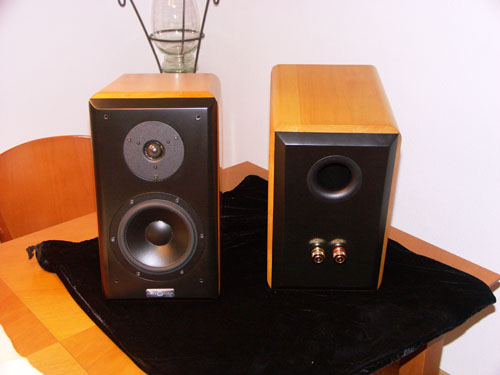
| [ Verus Canor Aria Speakers] |
© Ernest Ruiz. 2009
After more than one year without writing anything related to audio for Audio Nirvana due to excess of work, it is a pleasure to restart my auditions with this article about the Verus Canor Aria speakers. As you already know I have a special interest in bringing to you information about the hi fi equipment that is built here in my country of origin, Spain. All along these years I have been focused in showing hand made tube amplifiers made by audio specialists who give to us excellent systems with great built and sound qualities and at affordable prices. But now I would like to introduce to you to the world of speakers and this time I would like to talk about the Aria model made by spanish manufacturer Verus Canor. In Spain this manufacturer is not unknown among the audiophiles because the two men impulsing this brand, Angel Martínez and Francisco Moya, have been making great speakers like the ones we are going to talk about for some years.
Verus Canor was created in 2000 as a result of the coincidence of interests of Angel and Francisco to built high quality speakers that can compete in the same league as other well known and reputed speakers widely distributed through commercial channels and widely known by audiophiles all around the world. It was the representative of Verus Canor in the north area of Spain, Broker Audio, who suggested this audition. The man in front of Broker Audio, Blas Oliva, contacted me to prepare it and I must thank him, Angel and Paco, for the opportunity they are giving to me to listen these excellent speakers. Let's start talknig about what I have listened in the last few weeks.


The Verus Canor Aria speakers are a two way design with rear bass reflex port, a sensitivity of 88db/2.83v/1m and 8 ohm impedance. They use a 28mm Morel MDT32S tweeter and a 180mm AudioTechnology bass driver. The other parts of the speakers are of very high quality and can be seen downloading the information provided by the manufacturer or visting the Verus Canor web site where all the details of the Aria are explained in detail.
One of the things that must be highlighted from the Aria speakers is, without any doubt, its built and finish quality. The build quality is very high and it can be easily seen when we look at the speakers for the first time. They are made of high thickness MDF and inside the enclosure there are bracings in order to obtain a high rigidity and heavy box that helps to prevent unwanted vibrations. The outside look is very nice with real wood side panels, satin black front panel and matte black back panel. The building process of this box combines the use of sofisticated machinery to work with wood and manuals processes that Angel Martínez does in his workshop. As I have said before the Aria speakers can compete with other well known models made by famous manufacturers that everybody can find in audio shops around the world. This is something I would like to emphasize specially. When we are in front of audio products like the one we're talking about here, it always come to my mind the question why we here in our country, and I mean Spain, are prone to ignore the equipment that we build and, in contrast, we value all the products build abroad. Without questioning the quality of all these equipment made outside Spain, we must be conscious that here we can produce high quality audio products that can compete with those made by well known audio firms and on the contrary we tend to, mysteriously (or not?) ignore them. Do you think that and italian will do the same with any of the speakers made by Sonus Faber, or a danish with the equipment made by Dynaudio or Gryphon or and englishman with one of the brands made in the UK? I would say no. Maybe the question is that we prefer to believe what experts from other countries say instead of developing our own knowledge, listening and seeing different things in order to learn and to be self-sufficient. Something to thing about.
If we focused in the audition of the Aria first I have to introduce the system I have been using these days. The system has an Audiolab 8000C preamp, two Audiolab 8000MX power amps, an Audiolab 8000 DAX converter and a Teac VRDS10SE. Interconnects by Cardas Microtwin 300B and Straigth Wire Flex 4" for speakers. Before continuing I must confess that I had the first contact with the Aria at Angel Martínez home (btw, I also listened to the Liceo floorstanders. What a speakers!!) and there I realized that they were a really good pair.

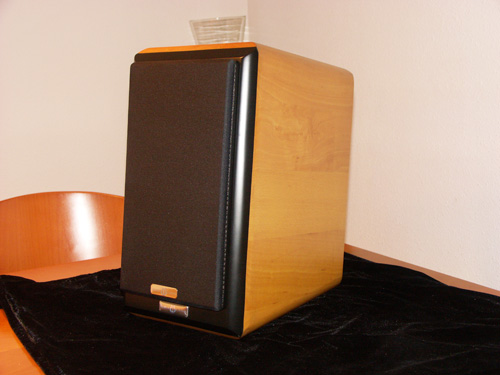
The first thing I noticed when I began to listen the Aria was their tone, very nice, with great instrument placement, even when complex musical passages were reproduced. They sounded to me very nice, even familiar. In every track I selected I could listened the exact thing I was hoping to listen exactly with the timbre and tone I remembered. The first track selected was the "Drum solo" by Juan de Encina played by the Barry Hayward Consort. The speakers reproduced with great spatiality the track and the echoes of the recording hall could be clearly listened. The drums sounded dry and controlled, without being boomy or excesively long. Next track was the "Autumn-Allegro" from Vivaldi's Four Seasons played by Sonatori de la Gioiosa Marca with Giuliano Carmignola playing volin. The only thing I can say is, wonderful! The Sonatori play classic italian music so well and the Aria sounded really nice. After Vivaldi's came Rebecca Pidgeon's "Grandmother" and with this track I realized how good were the Aria with voices. Pidgeon's voice was very good and always can be clearly heard among the other instruments. With "Le temps passé" by Michel Jonasz the voice again was very good, and the bass lines were very controled and with enough extension. With a modern track like Siedah Garret's "One man, one woman" bass were again very good, and I could felt them in my chest clearly.
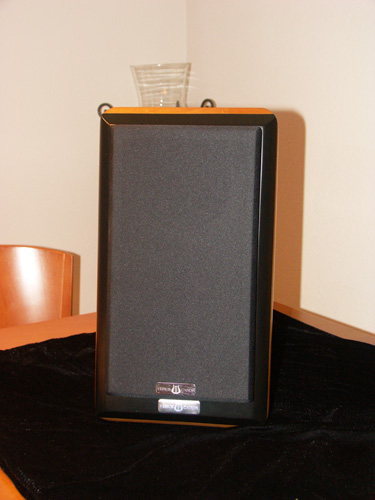
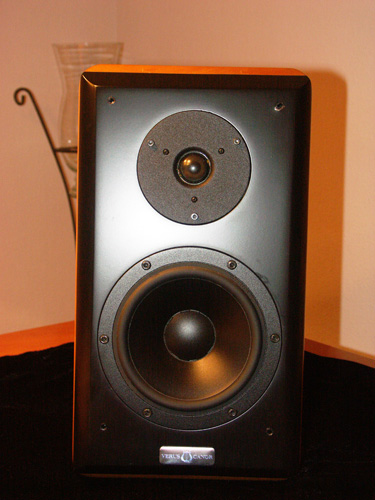
After this first audition my thoughts about the Aria were very good. In a relatively small box (remember it is a bookself speaker) the things I was listening to fulfilled my expectations. Good tone, very nice voices, good bass for such a speaker. Two days later I continued my audition with more conventional music. First Nnenna Freelon's songs from her record "Blueprint of a Lady: Sketches of Billie Holiday". The first song was "I didn't know what time it was" and her voice was excellent, very well focused and very clear. To my surprise I felt that the bass was maybe a little bit fat, so I tried to block the bass reflex ports but the results weren't good and I returned the speakers to its original configuration. I continued with "God bless the child" and Freelon's voice was again very good and focused. In fact it was extremelly pleasant. After Freelon came Madeleine Peyroux and the song "River" from her record "Half the perfect world". The voice was again very good, with presence and the bass was here completely normal. Switching to "Dear Mr. Sinatra" by John Pizzarelli and The Clayton-Hamilton Orchestra (Did I tell you how good is this orchestra?) the results were also very good. With "Ring a ding-ding" every instrument was perfectly noticeable and the guitar and voice of Pizzarelly among all of them. With "Lemon Twist" by Pizzarelly and George Shearing the sound was again very good with the soft and subtle vibraphone of the beginning of the track. I went back to Freelon and then I didn't feel the excessive bass. As you can see an audition is something surprising and changing. In my case I'm aware that I never heard the same things under apparent same conditions. Auditions depend of the time of the day, my mood and many other things. I believe that these things are what really make auditions something interesting and revealing.
The auditions continued the next days showing always the qualities of the Aria and that they could be in many wish lists, those from audiophiles that want to enjoy a very well made product that delivers a very good sound. In all the tracks I listened to the following days the Aria showed their abilities and my first impressions about them were confirmed: they can play at the same level that other well known designs in the audio world. After the auditions I reconnected my Monitor Audio and to my surprise when I play again music thru them I heard a strident first note, was it a result of my brain deceiving me or only the sample that the Aria are very well balanced speakers.
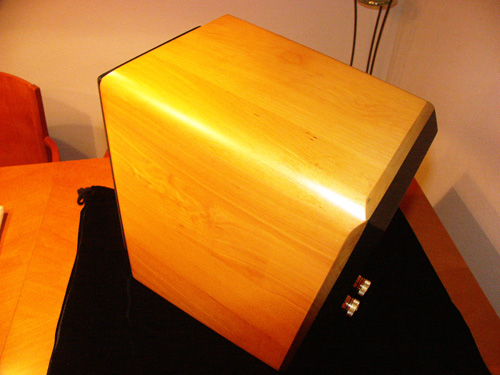
Finally, allow me to give you some advice. If you could, try to listen to the speakers that Verus Canor makes. I believe that they deserve a careful and closer look. Use this advice with any equipment you want to buy. Maybe some of you think that it is easier to buy without listening (oh, how good is the internet and online shops!) but I beleive that nothing can compare to the pleasure of listenig to hifi systems. You can learn, you can enjoy and you can find wondeful things as the Aria. Thanks again to Angel Martínez and Francisco Moya for building these speakers and to Blas Oliva for suggesting the audition.